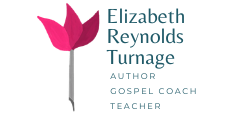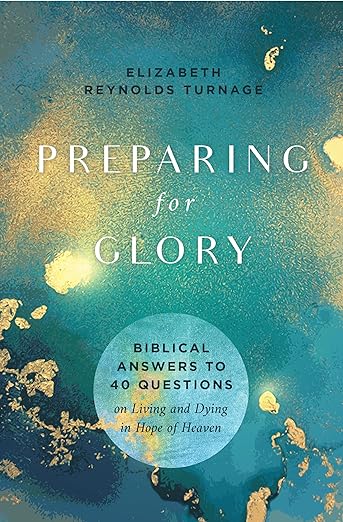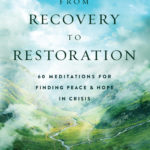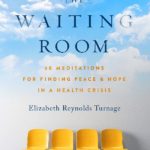by Elizabeth | Dec 17, 2010 | Learning Story
Read it with me one more time: Isaiah 35. Then enjoy Eugene Peterson’s thoughts on why we join this magnificent chorus.
“The word that stands out in Isaiah 35 is sing. There’s singing at the beginning, singing at the end, and singing at the center. The reason for the singing is clear. The Holy Land — which had been subjected to repeated sacrilege and, as a result, became a wasteland — now blossoms. What had been a barren and windswept wilderness becomes a land filled with forests and carpeted with flowers.
Better yet, bodies are restored: Blind people see, deaf people hear, the lame leap, mute people sing. All the ailments that mar the image of God in men and women are cured.
Best of all, people return. The long separation between the people of God and the place of God is over. A way is created for the exiles to return home to God.
If God is the blazing center of all these realities, then all the things we once began in his name are worth continuing: acts of love, covenants of commitment, habits of faithfulness, songs of joy.”
I invite you to join me in pausing, taking it all in, considering what God has done in Christ and what Christ will one day complete. And SING. Even if it’s the Muppets’ 12 days of Christmas, there is reason to sing!
by Elizabeth | Dec 15, 2010 | Learning Story
In the midst of the silent, dark nights of the soul or the turbulent, chaotic, harsh days of trial, how can we imagine a day when something as unlikely as a lush, tropical land arising out of a dry, barren wasteland?
 Back to Isaiah 35 for just the first two verses. If we stop. Truly STOP. And think about these verses, read them aloud, imagine them, picture them, we find the core narrative of Christmas hope. This is really what we have to “be glad” about — the desert has bloomed (If you don’t believe me, just google ‘desert bloom’ in Google Images.) The light has come. And it will come again one day to bring a new creation falling all over itself with wild, burgeoning glory:
Back to Isaiah 35 for just the first two verses. If we stop. Truly STOP. And think about these verses, read them aloud, imagine them, picture them, we find the core narrative of Christmas hope. This is really what we have to “be glad” about — the desert has bloomed (If you don’t believe me, just google ‘desert bloom’ in Google Images.) The light has come. And it will come again one day to bring a new creation falling all over itself with wild, burgeoning glory:
“Even the wilderness and desert will be glad in those days.
The wasteland will rejoice and blossom with spring crocuses.
2 Yes, there will be an abundance of flowers
and singing and joy!
The deserts will become as green as the mountains of Lebanon,
as lovely as Mount Carmel or the plain of Sharon.
There the Lord will display his glory,
the splendor of our God.”
Isaiah 35:1-2
To ponder:
1. What wildernesses are you currently living in (or what wildernesses are some dear ones living in?)
2. What does it look like to hope that the desert will bloom in those wildernesses? For you creatives, write a poem or song or create a visual of what it will be like in that day.
by Elizabeth | Dec 14, 2010 | Learning Story
 “Lord, I pray for our wandering hearts and minds that take us into a future of suffering without you. Forgive us for forgetting you.”
“Lord, I pray for our wandering hearts and minds that take us into a future of suffering without you. Forgive us for forgetting you.”
“Lord I believe; help my unbelief.” Mark 9:24
This Christmas season has already been filled with moments richer than the “Ultimate Chocolate (and every-other-kind-of-chip) Cookies” my friend Reina bakes. A graduation party for my son’s dear friend, a Christmas program that lifted our hearts to the heavens, a still moment in our house with 4 out of 6 gathered, quietly Christmas shopping on their Macbooks in front of a blazing fire:) (Yes, this is 21st Century Christmas!)
And yet. There are holes. So many dear friends struggling with illness, pain and grief, wondering if and when the day will come for it to end. One friend asks me if I sometimes feel a sadness descending at Christmastime and I nod. Mine feels like a blanket of fog that gathers and lifts, hers like being encircled by enemy troops. We wait for our daughter to finish exams and return home, and I think of those who wait for no one to return home. Because of the effects of the Fall, we all feel at times the anxiety, the weight of longings for shalom, the hopes and fears of all the years hovering.
And yet. And yet, BOTH the joys and the fears are what Christmas is all about. Sunday our pastor took us to Isaiah 35, which is actually a brilliant Christmas piece because it is about the “Return of the Ransomed” as my ESV Bible tells me. I’m going to be meditating on it all week, and I invite you to join me. For today, just sit with these few verses:
“With this news, strengthen those who have tired hands,
and encourage those who have weak knees.
Say to those with fearful hearts,
“Be strong, and do not fear,
for your God is coming to destroy your enemies.
He is coming to save you.” Isaiah 35:3-4 (NLT)
For reflection:
- Read all of Isaiah 35 then consider the following questions:
- What joys have you experienced this Christmas season or others?
- What anxieties or sorrows? How does Isaiah 35: 3-4 speak to your story or to that of someone you know?
Pray: Lord, help us to see YOU in our future. Not only have you come, lived, died, and been resurrected, but you WILL COME AGAIN to take us home where Christmas joy and hope will be everlasting and everpresent. We thank you for this great good news, Lord. Amen.
by Elizabeth | Dec 10, 2010 | Learning Story
 “There is a hidden culture of girls’ aggression in which bullying is epidemic, distinctive, and destructive. It is not marked by the direct physical and verbal behavior that is primarily the province of boys. Our culture refuses girls access to open conflict, and it forces their aggression into nonphysical, indirect, and covert forms. Girls use backbiting, exclusion, rumors, name-calling, and manipulation to inflict psychological pain on targeted victims.” Rachel Simmons, Odd Girl Out The question I’ve been asking for months is, “Is ‘sisterhood,’ that is, deep, engaging, loving, forgiving, reconciling community, possible for women?” Rachel Simmons’ book, Odd Girl Out, is a chilling and tough read. The stories of cruelty among girls would be impossible to believe if I didn’t know their real life truth firsthand from stories my teenage daughters tell me. Simmons’ book was written in 2002, but the realities of fallen relationships among women span time and culture. Scripture names stories that could be told in Simmons’ book. Think Rachel and Leah. Think Sarai and Hagar. Think Mary and Martha.
“There is a hidden culture of girls’ aggression in which bullying is epidemic, distinctive, and destructive. It is not marked by the direct physical and verbal behavior that is primarily the province of boys. Our culture refuses girls access to open conflict, and it forces their aggression into nonphysical, indirect, and covert forms. Girls use backbiting, exclusion, rumors, name-calling, and manipulation to inflict psychological pain on targeted victims.” Rachel Simmons, Odd Girl Out The question I’ve been asking for months is, “Is ‘sisterhood,’ that is, deep, engaging, loving, forgiving, reconciling community, possible for women?” Rachel Simmons’ book, Odd Girl Out, is a chilling and tough read. The stories of cruelty among girls would be impossible to believe if I didn’t know their real life truth firsthand from stories my teenage daughters tell me. Simmons’ book was written in 2002, but the realities of fallen relationships among women span time and culture. Scripture names stories that could be told in Simmons’ book. Think Rachel and Leah. Think Sarai and Hagar. Think Mary and Martha.
There is no hope for women relationally without the gospel. Left to have its way, our sin will destroy any healthy female relationship. Our selfishness will lead us to suck the life out of friendships. Our fear will lead us to compare and shrivel or compete and do harm. Our shame will cause us to hide or harm. And yet, and yet…the joy and hope we celebrate in this season suggest that our sin does not rule the day. Just as Christ was born into the world to conquer physical death, his life, death, and incarnation deconstructs the relational suicide and murder we enact as women. My conclusion: TRUE SISTERHOOD IS POSSIBLE because of what Christ has done for us and is doing in us! What do you think? Is true sisterhood possible? What moments in your life have led you to give up on healthy relationships with women? What stories give you hope? For more on this subject, listen to the conversation I had with Constance Rhodes and Paige Armstrong at www.truesisterhood.com. We talked about how sharing stories can help to grow sisterhood.
by Elizabeth | Dec 9, 2010 | Learning Story
“We’re total strangers who become instant sisters who understand and mirror one another’s deepest hopes and fears before we’ve even said hello.” Brenda Coffee, Breast Cancer Sisterhood.
I read this remarkable quote in an article about Elizabeth Edwards’ deep bond with other breast cancer survivors.
How true that some of the greatest struggles of our lives create powerful relationships. This quote also made me think of a different kind of sisterhood, one I’ve been pondering quite a bit these last six months. Let’s look at a wonderful “sisterhood” that we find in the middle of the Advent story:
Luke 1:36: “And behold, your relative Elizabeth in her old age has also conceived a son, and this is the sixth month with her who was called barren. For nothing will be impossible with God…”
Luke 1:39: “In those days Mary arose and went with haste into the hill country, to a town in Judah, and she entered the house of Zechariah and greeted Elizabeth. And when Elizabeth heard the greeting of Mary, the baby leaped in her womb. And Elizabeth was filled with the Holy Spirit, and she exclaimed with a loud cry. Blessed are you among women, and blessed is the fruit of your womb! And why is this granted to me that the mother of my Lord should come to me? For behold, when the sound of your greeting came to my ears, the baby in my womb leaped for joy. And blessed is she who believed that there would be a fulfillment of what was spoken to her from the Lord.”
This story and the story of Christ leads me to believe that there is a kind of sisterhood like the one Coffee describes, one in which, “total strangers …become instant sisters who understand and mirror one another’s deepest hopes and fears before we’ve even said hello.” Thankfully, we don’t have to be breast cancer survivors to know this kind of bond. We are truly sisters bound by the blood of Christ and the heartache and hope of the gospel journey.
by Elizabeth | Dec 7, 2010 | Learning Story
It’s really NOT too early to begin planning for April, especially if it involves rest and reflection on the gospel story and what God is up to in YOUR story. Hear all about it here!
Learn, Live, Love God’s Story of Grace
Discovering Your Story Retreat
April 14-17, 2011
Pensacola Beach, Florida








